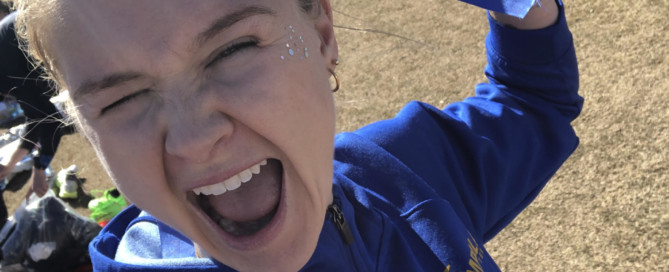It has been two weeks since the shelter-in-place mandate, and there is a lot of scary news regarding health, hygiene, and how we all have to live with minimal amounts of excursions from our own homes. However, human nature and evolution goes against just staying at home, as many have taken to the streets to run off that third tub of Cheetos and escape the confinement of our couches. So, why should you join the many in going out for a run? Simple — we evolved from swinging on trees like Tarzan to becoming ultramarathon hunters, and to this day are still natural-born runners.
The human body is incredible and cleverly put together in a way that makes us one of the best-equipped animals to go extreme distances. Millions of years ago, we evolved from classical primates that looked similar to current ape species. So, what changed? For starters, we developed very long, springy tendons that are found in our legs and feet, which behave like rubber bands that stretch to capture kinetic energy, then contract or snap back to release that energy, propelling ourselves forward like a human catapult.
On top of these large tendons, we developed the gluteus maximus, more commonly known as the rump, the behind, the caboose, the sitzfleisch, and many more names; this muscle isn’t there for cushioning for us to sit on or throw it back, but to hold our body upright.
Then we have the hips, which also evolved to be comparatively smaller and thinner to allow our body to contort and twist to aid in keeping our center of mass balanced. The hips work together with our large shoulders, which provide movement opposite from our legs to keep our center of mass balanced. This process also aids in the expansion of our lungs, increasing oxygen capacity and our VO2 max — fancy sport medicine talk for how efficiently we can breathe.
Moving on up, we reach the nuchal ligament, which is an elastic band of tissue that runs from a ridge on the base of the skull to the spine. This ligament ensures that when we run, we don’t end up looking like a bobblehead on a rollercoaster doing back-to-back corkscrew loops; in short, it holds our heads in place, which is also crucial when driving, riding roller coasters, or playing other sports such as football. What this ligament protects aside from our wobbly necks is the most crucial organ in our body, the brain.
The brain is arguably the most crucial part in running, as it controls everything, from the contraction of our muscles to the micromanagement of fueling and consuming our stored energy. Furthermore, our hippocampus grew as we evolved into runners, allowing us to learn and remember more and make us better navigators. All of this helped us to learn how to take our first steps, learn how to run, and finally to learn how to become an efficient distance runner.
All of these changes in our body over millions of years have developed us into the perfect distance running machines, so why not go out and take it for a bit of a test run and see what you can do; no better time than now!
References:
Cromie, William J. “Running Paced Human Evolution.” Harvard Gazette. Harvard University, November 18, 2004. https://news.harvard.edu/gazette/story/2004/11/running-paced-human-evolution/.
Powell, Alvin. “Humans Hot, Sweaty, Natural-Born Runners.” Harvard Gazette. Harvard University, April 19, 2007. https://news.harvard.edu/gazette/story/2007/04/humans-hot-sweaty-natural-born-runners/.
Schulkin, Jay. “Evolutionary Basis of Human Running and Its Impact on Neural Function.” Frontiers in systems neuroscience. National Center for Biotechnology Information, U.S. National Library of Medicine, July 11, 2016. https://www.ncbi.nlm.nih.gov/pmc/articles/PMC4939291/.


